In April 1843, in the small village of Kinderhook, Illinois, Robert Wiley dug a deep shaft into the center of a nearby Indian mound ( to read the previous post about mounds click here). Wiley claimed to have had dreams in which valuable treasure was hidden in the mound. At first, Wiley dug the hole alone, but after a few days, Wilbur Fugate, Bridge Whitten, WP Harris, and few other men came to assist him. Soon after the men commenced digging they “found” six small bell shaped plates of copper held together by a ring. Also unearthed was a skeleton of a nine foot man. WP Harris took the plates home to wash them with sulphuric acid. Once the plates were cleaned, strange markings were revealed which appeared to be Egyptian hieroglyphics.
The Kinderhook plates, as they came to be known, were taken to Nauvoo and as reported in the Nauvoo newspaper, Times and Seasons, the plates were shown to Joseph Smith and he was able to decipher the symbols written upon the plates. The article touted the Kinderhook plates and Joseph’s translating skills as further evidence of the credibility of the Book of Mormon. There were also mentions of the Kinderhook Plates in the Warsaw Signal and the Nauvoo Neighbor:
“Why does the circumstance of the plates recently found in a mound in Pike County, Ill., by Mr. Wiley, together with the ethnology and a thousand other things, go to prove the Book of Mormon true? – Ans. [Answer] Because it is true!”
– Times and Seasons, v. 5, p. 406
“The new work which Jo. Is about to issue as a translation of these [Kinderhook] plates will be nothing more nor less than a sequel to the Book of Mormon…”
“The contents of the plates, together with a Facsimile of the same, will be published in the ‘Times and Seasons,’ as soon as the translation is completed.”
– The Nauvoo Neighbor, June 1843
William Clayton, a secretary of Joseph Smith, recorded in his journal:
“President Joseph has translated a portion, and says they contain the history of the person
with whom they were found; and he was a descendant of Ham, through the loins of
Pharaoh, King of Egypt, and that he received his kingdom through the ruler of heaven and
earth.”- William Clayton
Parley P Pratt wrote a letter to his
cousin, John Van Cautt:
“Six plates having the appearance of Brass have lately been dug out of the mound by a gentleman in Pike C. [County] Illinois. They are small and filled with engravings in Egyptian language and contain the genealogy of one of the ancient Jaredite back to Ham the son of Noah.”
And then… nothing happens; Joseph himself never mentions the incident and the Kinderhook affair is swept into time. The event is kept barely alive as a sensationalized tale told around LDS circles, until James T. Cobb, step-son of Brigham Young, wrote to Wilber Fugate in 1879. Fugate responds:
“I received your letter in regard to those plates, and will
say answer they are a humbug, gotten up by Robert Wiley, Bridge Whitten, and myself. We read in Pratt’s prophecy (a missionary tract written by Parley P Pratt) that ‘truth would spring up out of the earth.’ We concluded to
prove the prophecy by way of a joke… Bridge Whitten cut them [the plates] out some pieces of copper Wiley and I made the hieroglyphics by making impressions on beeswax and filling them with acid and
putting it on the plates.”
Unfortunately the church’s enemies got ahold of this “joke” and used it many times over in their arsenal of evidences against Joseph’s prophetic abilities.
James D. Bales a Mormon critic from the 1940’s smugly said,
Adding to the muddle was the History of the Church, an official publication, written and complied by several individuals who essentially put words into Joseph Smith’s mouth, after he was dead, and not all of what they wrote was factual. Historian D. Michael Quinn explained,
Quinn goes on to explain that this was normal scholarship for the early 19th century America.
LDS Historian Stanley Kimball acknowledged the clever joke had been played upon the Nauvoo Mormon population and he said,
Finally with the compilation of the Joseph Smith Papers the truth about what really happened with the Kinderhook plates has come to the light. Historian Don Bradley gave an entertaining and enlightening presentation to read here or watch it here. Bradley, reveals, fellow Joseph Smith Papers historian, Mark Ashurst-McGee, and himself have unraveled the Kinderhook plate mystery.
Just to give you an idea, here is an informative graphic from his paper:
Bradley and Ashurst-McGee reveal Joseph Smith was indeed shown the Kinderhook plates and was asked the translate them. In Joseph’s papers we find that he had a copy of a book called Grammer and Alphabet of the Egyptian Language which he consulted to give his secular personal opinion of one lone symbol which was repeated several times on the plates. The Kinderhook plates event was of so little importance to Joseph Smith that he failed to mention the incident in his own journal. Clayton and Pratt and others impulsively and erroneously inferred Joseph’s “interpretation” of the Kinderhook plates as a spiritual rather than a secular event. Don Bradley gives an enjoyable presentation of how it all was discovered. Kudos to Mark Ashurst-McGee and Don Bradley for brilliantly solving the mystery!!
There is a moral to this story, Dear Reader, which is…there are a lot of goofy stories out there about Joseph Smith. Don’t be so gullible to believe everything you read/hear. The wisest course of action to maintain is, unless there is a verifiable account written or signed by Joseph Smith, what others said, he said or did, is only pure speculation.


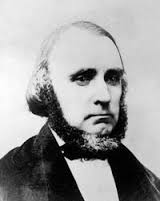
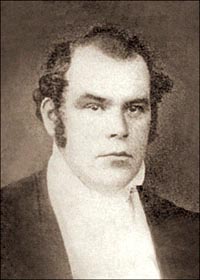

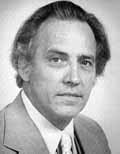
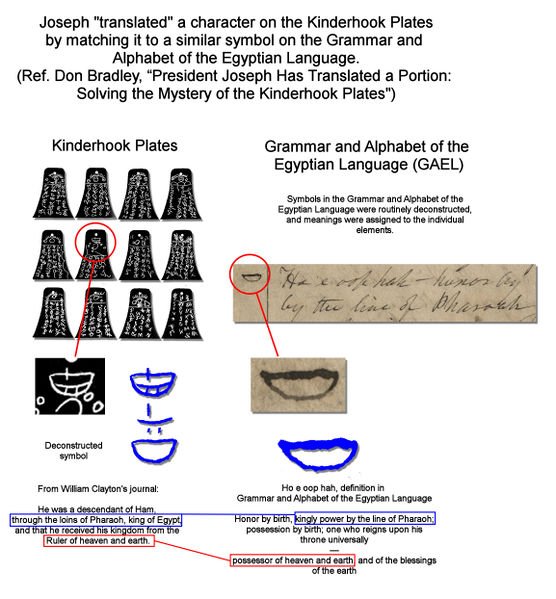

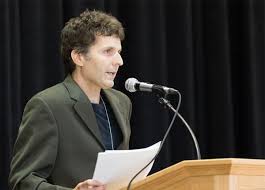

New Post: The Mystery of the Kinderhook Plates, Solved!: In April 1843, in the small village of K… http://t.co/nXnclRq6IN #LDS #Mormon
TheMillennialStar: The Mystery of the Kinderhook Plates, Solved! http://t.co/BaPAT3NudV #lds #mormon
RT @ldsblogs: TheMillennialStar: The Mystery of the Kinderhook Plates, Solved! http://t.co/BaPAT3NudV #lds #mormon
Interesting. I was just talking about that argument of Don Bradley’s with a friend yesterday. I think this is pretty persuasive.
RT @ldsblogs TheMillennialStar: The Mystery of the Kinderhook Plates, Solved! http://t.co/Xh7QMCFrUy —Most basic explanation I’ve ever seen.
RT @ldsblogs: TheMillennialStar: The Mystery of the Kinderhook Plates, Solved! http://t.co/BaPAT3NudV #lds #mormon
Bringing the Grammar and Alphabet of the Egyptian Language up opens a separate can of worms, though, doesn’t it? When the post says “In Joseph’s papers we find that he had a copy of a book called Grammer [sic] and Alphabet of the Egyptian Language,” it implies that this was a scholarly textbook published by Egyptologists.
But that’s not what it was. It was a book produced by Joseph and his scribes (parts are written in Joseph’s hand) during the translation of the book of Abraham. How does this mesh with this post’s conclusion that Joseph was merely giving a “secular” opinion?
You are right adano, the GAEL is a book put together in Kirtland, Ohio. I probably should have explained that, but doing your reading homework as you did you know the whole story. Here is a quote from the totally amazing Don Bradley;
I agree with Bradley, Joseph was only giving it is own personal opinion. If the Kinderhook plates event was spiritual, I am putting my own interpretation on Joseph Smith’s experiences, but I think he would have had a “feeling” if the Kinderhook plates were real and if it was scriptural, meaning G-d had a purpose for the “knowledge” found on the Kinderhook plates . Since it was not important, Joseph assigned no importance to the Kinderhook Plates. So yes, Joseph was giving his secular (personal) opinion.
Joseph’s opinion would not have been strictly “secular”, in that he was using evidence he felt he had received by revelation (the GAEL). However, once he had that evidence in-hand, he was incorporating that evidence into an almost purely secular process: take character from one language, find a match from your dictionary/lexicon and observe the meaning of the character, and (if you haven’t finished the work) make a couple of educated guesses about the content of the entire document based on what you (think you) know so far.
To my mind, Joseph’s problem was that he “drew inference upon inference”, as judges like to say. He received the Book of Abraham by revelation. He then inferred that his translation was literal and that he could reverse-engineer it into a sort of Rosetta Stone to the Egyptian language; and then he inferred that the result–his GAEL–was sufficiently accurate that it could be applied to other (presumably) ancient documents and generate a coherent, English translation.
Smith may well have been wrong in those inferences–but his actions aren’t the actions of someone who knows he’s running a fraud. It seems to me that someone who knew the GAEL was a bunch of hooey, would never have dared to have it made public or admit to using it as the key to producing another “translation”–they would have known that at best, strict adherence to such a key would produce a scattered gobbledygook of unrelated concepts and ideas.
I think there still are issues with the Egyptian Alphabet and Grammar. While I tend to agree with apologists that it was Joseph and company working backwards to try to figure things out there are some issues with this view. First it’s clearly wrong. Further the Rosetta Stone had been used to translate Egyptian at the time of the Alphabet and Grammar. Despite having a lot of Egyptian documents and mummies Joseph and company appear to be ignorant of Champollion’s translation in the 1820s.
It’s following Kircher’s methods from the 17th century before the Rosetta stone was used to translate Egyptian. There was also a early medieval Arab view of Egyptian was published in English in 1806 as Ancient Alphabets and Hieroglyphic Characters Explained; with an Account of the Egyptian Priests, their Classes, Initiation, and Sacrifices in the Arabic Language. A lot of the ideas of Joseph and company come from Kircher including ties to Adam & Eve and so forth.
I think what we need is a good analysis of the EA&G with texts available in English to Joseph such as work on Kircher and others. I bet we’ll find that parts of it come as much from those texts as the Book of Abraham or are natural inferences from those texts for those in a Mormon context.
That said, while a lot in the Egyptian and Grammar comes from the Book of Abraham translation there is a lot that has no echo in our translation nor the commentary on the vignettes or hypocephalus (fac. 2). So the question becomes if they were working backwards rather than Joseph providing new data, where did this missing data come. I suspect it’d be useful for someone to do a close study comparing the EA&G to texts available at the time in English to Joseph. I bet we’d find that the strange other translations (often with echoes of Kabbalism) actually originate with Kircher and company.
Whoops. By wrong I mean the EA&G is an incorrect way to translate Egyptian. Not that it’s wrong to assume Joseph and his friends were working backwards.
Nice post Joanna. You are now the official M* expert on mounds and plates found in the midwest region.
Don’s a great guy. I’m glad he returned to the Church and is working on our side to try and understand these things.
Thanks JB for a great post.
I just read Don’s story at http://www.sltrib.com/sltrib/lifestyle/54790798-80/bradley-mormon-faith-smith.html.csp. And now I am glad too. Thanks for the post since I had never really researched this one.
Pingback: Planchas de Kinderhood | Brother Campos
Great conversation everyone! Thanks for stopping by the read and to comment.
Dear Joanna,
Thank you for this. I will note that Joseph was rather distracted in May/June 1844. There might be a reason he made no mention of the Kinderhook plates after 27 June, for example.
Meg, You are right, it does seem rather chaotic at the end. I think Joseph had a lot on his plate all the time, or perhaps, since he was a prophet, he took his question to G-d. A wise and all-seeing Heavenly Father perhaps gave his answer to Joseph in the form of a “stupor of thought”. But then I am making the same mistake as Clayton, Pratt and others and putting words into Joseph’s mouth. So, I will just say, perhaps, I don’t know.
Here’s something to think about. If Joseph Smith were a fraud, having made up the story of finding the plates in the ground, wouldn’t he have been very suspicious of someone else using his modus operandi? He’d likely immediately think they were fraudulent. This could have been a great time for him to show his prophetic bona fides by saying they were fake.
Instead, he seems to have made a small attempt to translate the plates from his GAEL, but didn’t pursue it for long. If he’s a fraud, why make any attempt? It seems he thought he could actually translate. Now if you won’t accept the idea that he is a prophet, that makes him delusional. If he’s delusional, why didn’t he produce something from the plates as he did the Book of Abraham from the papyrus? It’s easy to say, “Yeah, he was delusional when he thought he could translate the papyrus,” and that’s sensible enough. But then you have to describe his delusion to the degree that he completely invented the gold plates and the Book of Mormon and was later able to convince witnesses they existed. I think that level of mental illness would be tough to hide and very tough to gain a following with. I’m no psychologist of course so maybe I’m way off on that.
At least for me, the tale of the Kinderhook plates tells me that Joseph genuinely believed he had some ability to translate (or had in the past). I also don’t buy him as being the level of crazy required to invent the Book of Mormon and believe it came from God. And if that’s the case, that leaves the question of why he would attempt to translate the Kinderhook plates at all?
DY, Very well said. A careful reader of the Book of Mormon would realize that “crazy” could not have written it. Inspired, yes. Brilliant, yes. Crazy, no.
Why? I don’t know. Joseph was an open book in that he was not afraid to give his opinion. Perhaps he was just being helpful, he was often helpful. Whatever the reason, it was a “nothing” moment a day in the life of Joseph. Other things were more important. That is why it is amusing that roughly 175 years later we are (still) discussing it.